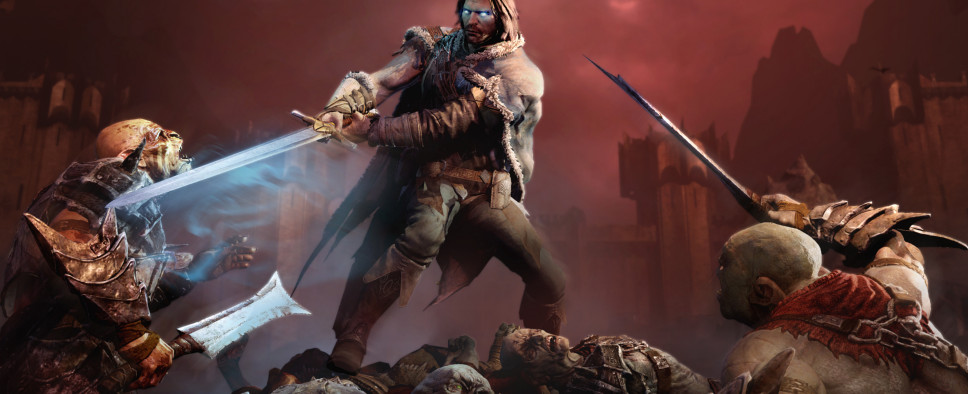A History of The Lord of the Rings in Video Games
-
Category: News ArchiveHits: 2531

Polygon has published an excellent piece on the history of video game adaptations of J.R.R. Tolkien's fantasy works, starting from the text adventure adaptation of The Hobbit from Beam Software all the way down to the action-game Middle-Earth: Shadow of Mordor from Monolith, with input from various developers that worked on these titles and Tolkien expert Corey Olsen. I highly recommend you take some time aside and read the piece in full, but I'm going to quote a couple of snippets, one concerning the canceled The Elder Scrolls-inspired The Lord of the Rings: The White Council:
With both the movie and book licenses, EA's restrictions were lifted. Almost immediately, development began on The Lord of the Rings: The White Council, a role-playing game that would transform Middle-earth into a massive open world for players to explore. Developer EA Redwood Shores announced the title in summer 2006 and promised a world filled with characters controlled by powerful simulation AI previously used for The Sims 2 and a seemingly endless number of things to do with a story-based quest structure. Players would play as either a Man, Dwarf or Elf and move through Middle-earth as an ally of the White Council, the collection of powers fighting against Sauron's encroaching darkness.
The White Council was almost too ambitious. Monif said that during pre-production, much of the talk focused on what developers could do with the game for the next console generation that is, PlayStation 3 and Xbox 360 lighting and particle effects, the world generation, how characters would look.
Players would be able to ride the Eagles. They would come into contact with an entire race of Dragons.
"It was going to be The Elder Scrolls [4]: Oblivion meets The Lord of the Rings," Monif said. "The book rights landed, so we were able to do all sorts of cool shit, that was the mandate. We got them and just went, 'Go go go!'"
Monif described massive hand-drawn maps that were scanned and placed into the game, which would give players detailed directions to consult as they ran through large areas. Monsters wouldn't randomly spawn; instead, there would be roving bands of creatures covering the map, with players having the option to engage or use stealth. And the story would dig into Tolkien lore found outside of The Hobbit and the Lord of the Rings trilogy namely, The Silmarillion and, briefly, Unfinished Tales.
In Tolkien's legendarium, there are five wizards in all: Gandalf the Grey, Saruman the White, Radagast the Brown and two Blue Wizards called the Istari. The latter two disappeared into Eastern territories after all five landed on the shores of Middle-earth, having traveled there from the land of the Valar, the world's godlike caretakers. All five wizards would be in the game, plus some Ring users like the Dwarven Kings and Elven rulers. These would be the members of the White Council, the company dedicated to protecting Middle-earth and preventing Sauron's evil from swallowing it whole.
Prototyping was nearly complete and The White Council had been officially announced. But in February 2007, EA announced during an investor call that project had been put on hold indefinitely, and shortly afterward a large round of layoffs hit the company.
And one concerning Shadow of Mordor's treatment of Tolkien's world:
In Tolkien's world, you can't use the weapon of the enemy against the enemy, because it makes you just as bad as he is. There is a track record for this kind of behavior. Isildur, the young king who destroys Sauron and takes the One Ring at the end of the Second Age, is obsessed with the Ring. Boromir pressures Frodo to bring the Ring to Gondor, where he hopes to find a way to use it against Sauron. Both men die tragically in Ring-related skirmishes.
"What the protagonist of that game is doing is precisely the thing that Tolkien's books warn against," Tolkien Professor Corey Olsen said. "For you as a gamer to be playing the role of a supposedly good guy in Tolkien's world who is dominating the wills of other creatures ... it is the opposite of what Tolkien described. I honestly think it's ignorance."
But de Plater said this is exactly what the game is going for, exploring the idea of someone actually using the enemy's power to try and subvert the enemy.
"At the very starting point, the first thing [we thought of] was Boromir," de Plater said of protagonist Talion's inspiration Boromir, had he gotten hold of the Ring and used its power. "The what-if? We explore that in the story."

